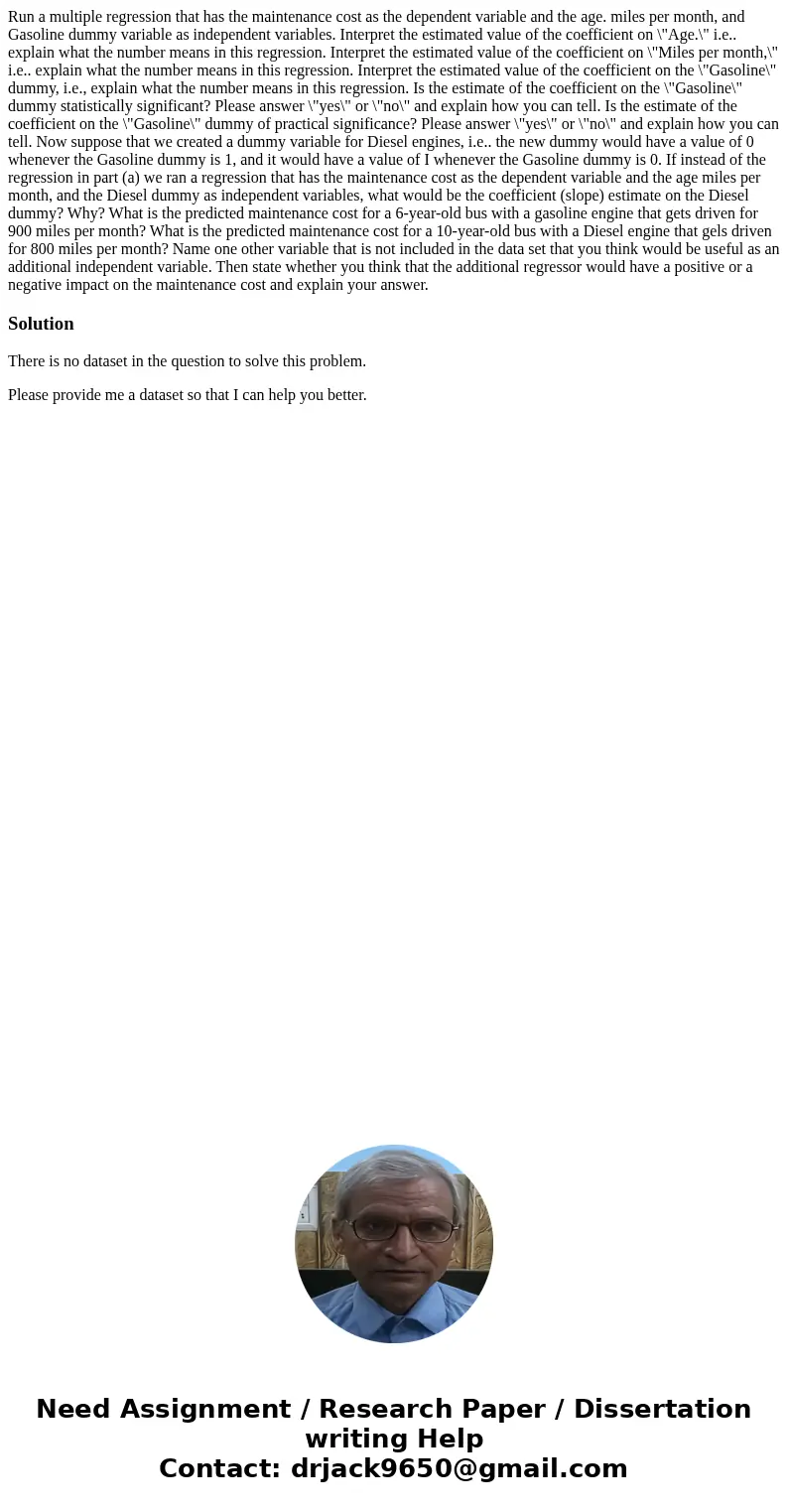Run a multiple regression that has the maintenance cost as t
Run a multiple regression that has the maintenance cost as the dependent variable and the age. miles per month, and Gasoline dummy variable as independent variables. Interpret the estimated value of the coefficient on \"Age.\" i.e.. explain what the number means in this regression. Interpret the estimated value of the coefficient on \"Miles per month,\" i.e.. explain what the number means in this regression. Interpret the estimated value of the coefficient on the \"Gasoline\" dummy, i.e., explain what the number means in this regression. Is the estimate of the coefficient on the \"Gasoline\" dummy statistically significant? Please answer \"yes\" or \"no\" and explain how you can tell. Is the estimate of the coefficient on the \"Gasoline\" dummy of practical significance? Please answer \"yes\" or \"no\" and explain how you can tell. Now suppose that we created a dummy variable for Diesel engines, i.e.. the new dummy would have a value of 0 whenever the Gasoline dummy is 1, and it would have a value of I whenever the Gasoline dummy is 0. If instead of the regression in part (a) we ran a regression that has the maintenance cost as the dependent variable and the age miles per month, and the Diesel dummy as independent variables, what would be the coefficient (slope) estimate on the Diesel dummy? Why? What is the predicted maintenance cost for a 6-year-old bus with a gasoline engine that gets driven for 900 miles per month? What is the predicted maintenance cost for a 10-year-old bus with a Diesel engine that gels driven for 800 miles per month? Name one other variable that is not included in the data set that you think would be useful as an additional independent variable. Then state whether you think that the additional regressor would have a positive or a negative impact on the maintenance cost and explain your answer.
Solution
There is no dataset in the question to solve this problem.
Please provide me a dataset so that I can help you better.

 Homework Sourse
Homework Sourse